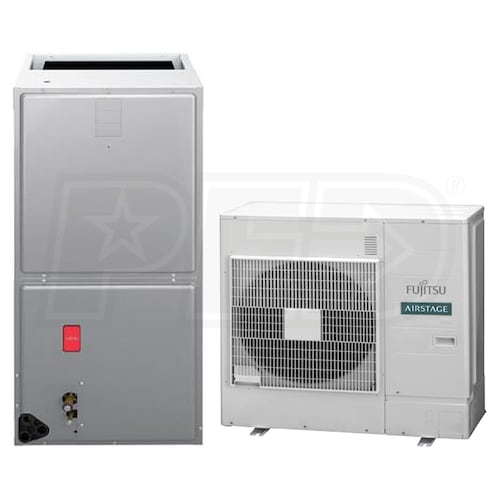I'm trying to decide between two heat pumps with inverter compressors; either should be able to heat (and cool) my place without any backup (propane furnace or heat strips). One's a re-badged Midea for $3300 or so, the other is a Fujitsu for $5300. It's a pretty huge price differential. My HVAC friend, who's gonna help with the install and warranty, thinks the extra cost of the Fujitsu isn't justified (never mind the $8000 Mitsubishi).

 www.ecomfort.com
www.ecomfort.com
So I have a hunch - maybe it's not a new idea - and I'm wondering what my HVAC-savvy friends here think.
It seems a pretty widely-held belief that the Japanese manufacturers, primarily Fujitsu and Mitsubishi, are in a league of their own, as far as quality of manufacture. Many would argue that the big American name brands such as Carrier are comparable.
I'm wondering if the perception of quality is due to differences in how the products are installed. That is, it's hard for DIY'ers to purchase Fujitsu and Mitsubishi, or at least to purchase with warranty coverage. In contrast, the various re-brandings of the big Chinese manufactuers like Midea and Gree, brands like Mr Cool, ACIQ, and Blueridge, can be bought by any bozo. Thus the quality of the average install is far inferior for the Chinese-made brands.
So perhaps the quality of the equipment is not necessarily inferior. Or at least the difference doesn't justify the price discrepancy.
Note the fact that brands like Carrier are mostly installed by pros, and are perceived as being as good as the Japanese brands. And if I understand correctly, a lot of those units are now manufactured in China.

Fujitsu 36LMAS1 - 36k BTU Cooling + Heating - Multi-Position Air Handler System - 17.1 SEER2
The Fujitsu - 36k BTU Cooling + Heating - Multi-Position Air Handler System - 17.1 SEER2 36LMAS1 has been discontinued. Check out Expert's recommended alternatives for another top mini split system.
So I have a hunch - maybe it's not a new idea - and I'm wondering what my HVAC-savvy friends here think.
It seems a pretty widely-held belief that the Japanese manufacturers, primarily Fujitsu and Mitsubishi, are in a league of their own, as far as quality of manufacture. Many would argue that the big American name brands such as Carrier are comparable.
I'm wondering if the perception of quality is due to differences in how the products are installed. That is, it's hard for DIY'ers to purchase Fujitsu and Mitsubishi, or at least to purchase with warranty coverage. In contrast, the various re-brandings of the big Chinese manufactuers like Midea and Gree, brands like Mr Cool, ACIQ, and Blueridge, can be bought by any bozo. Thus the quality of the average install is far inferior for the Chinese-made brands.
So perhaps the quality of the equipment is not necessarily inferior. Or at least the difference doesn't justify the price discrepancy.
Note the fact that brands like Carrier are mostly installed by pros, and are perceived as being as good as the Japanese brands. And if I understand correctly, a lot of those units are now manufactured in China.


 no risk save 30%. I did spend a lot extra on my dehumidifier. Like $1500 more for the newest most efficient top of the line unit. For something that will run as much as it does I did think it was worth it.
no risk save 30%. I did spend a lot extra on my dehumidifier. Like $1500 more for the newest most efficient top of the line unit. For something that will run as much as it does I did think it was worth it. ![[Hearth.com] Japanese heat pump worth the extra cost ? [Hearth.com] Japanese heat pump worth the extra cost ?](https://www.hearth.com/talk/data/attachments/315/315910-bd58f39bdfa00df6a0c06908ed65c1d2.jpg?hash=IW4VK8ywac)
